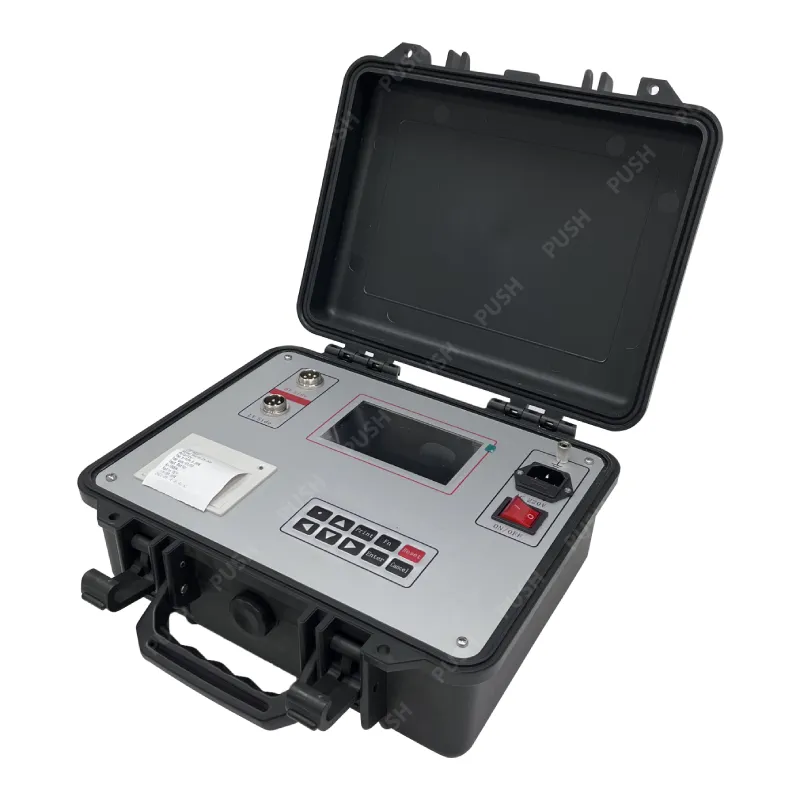 English
English


tan delta of bushing
Understanding Tan Delta Testing of Bushings An Essential Tool for Insulation Assessment
The tan delta, or dielectric loss tangent, is a key parameter in assessing the condition of electrical insulating materials, particularly in high-voltage bushings. These components, often found in transformers and circuit breakers, play a critical role in managing and directing electrical energy. Over time, the insulation within bushings may degrade due to various factors, including moisture ingress, thermal aging, and electrical stress. Therefore, regular testing of the insulation system through tan delta measurements is crucial for maintaining reliable operation and preventing unexpected failures.
What is Tan Delta?
Tan delta is a measure of the inefficiency of an insulating material. It is defined as the ratio of the resistive current (loss) to the capacitive current (storage) in an AC circuit. Mathematically, it describes the amount of energy lost as heat compared to the energy stored in the dielectric during each cycle of the applied voltage. A higher tan delta value indicates greater losses within the insulation, which can signify deteriorating conditions.
Importance of Tan Delta Testing in Bushings
Testing the tan delta of bushings provides significant insights into the health of electrical insulation systems
. Regular measurements can help detect early signs of insulation degradation, allowing for timely maintenance or replacement of compromised components. Moreover, tan delta testing is a non-invasive and relatively straightforward method that can be conducted while the equipment is energized, reducing downtime and operational disruptions.tan delta of bushing

Process of Tan Delta Testing
The testing process typically involves applying an AC voltage to the bushing and measuring the resulting current. Specialized equipment is used to analyze the phase shift between the voltage and current waveforms, helping to calculate the tan delta value. Several factors can influence the results, including temperature, humidity, and the frequency of the applied voltage. Therefore, it is essential to conduct tests under controlled conditions and take multiple readings over time for accurate trend analysis.
Interpreting Tan Delta Results
Interpretation of tan delta results involves understanding the threshold values that indicate acceptable insulation condition versus those that suggest potential problems. Generally, tan delta values above 0.5% may be viewed with concern, while values above 1% often indicate significant issues that require immediate investigation. However, each bushing type may have its own baseline values, making it critical to compare results with historical data and manufacturer specifications.
Conclusion
In conclusion, the tan delta testing of bushings is an indispensable tool in the electrical engineering field, enabling professionals to monitor and maintain the integrity of insulation systems effectively. By routinely assessing tan delta values, utilities and industrial operators can proactively manage the life cycle of their high-voltage equipment, ensuring operational reliability and safety. Regular monitoring not only aids in immediate risk mitigation but also contributes to long-term strategic planning for infrastructure investment and upgrades, making it a vital practice in modern electrical maintenance strategies.
-
Differences between open cup flash point tester and closed cup flash point testerNewsOct.31,2024
-
The Reliable Load Tap ChangerNewsOct.23,2024
-
The Essential Guide to Hipot TestersNewsOct.23,2024
-
The Digital Insulation TesterNewsOct.23,2024
-
The Best Earth Loop Impedance Tester for SaleNewsOct.23,2024
-
Tan Delta Tester--The Essential Tool for Electrical Insulation TestingNewsOct.23,2024





